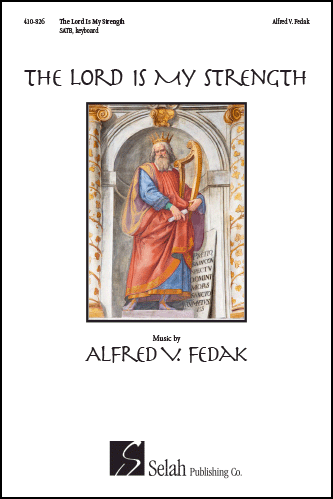|
Composer
Alfred V. Fedak
Text Psalm 30 and 126
Voicing SATB, keyboard
Topics Epiphany
Scripture references Psalms 30: 5, 11, 12; 126:5
Lectionary Usage Epiphany 6B, Easter 3C, Thanksgiving B
Price $2.00 (U.S.)
Length 2' 25" Released 1/2020
Catalog no. 410-826
Difficulty Mod. easy
|
Order now!
Order PDF download!
Min. of 5
Description
Alfred Fedak's setting of verses from Psalms 126 and 30 moves dramatically from darkness to light. The piece begins in hushed, quiet contemplation: "Those who sow in tears, shall reap in joy. / Weeping may last for a while, but joy comes in the morning." The music bursts into a joyous celebration--"For the Lord has become my salvation"--ending in a coda of ecstatic Alleluias
Text
Those who sow in tears, shall reap in joy.
Weeping may last for a night,
but joy comes in the morning.
For the Lord become my salvation;
the Lord is my strength and my song.
O Lord my God, I will praise you forever.
Alleluia.
You turn my laments into dancing
And fill my heart with joy!
My soul shall sing your praises today
and never be silent: Alleluia!
--Psalm 126:5, Psalm 30:5, 11, 12
|
|


Review
"Fedak weaves together verses from Psalm 30 and 126 beginning in lament and ending in determined trust in the Lord. A plaintive instrumental opening gives way to the choir singing unaccompanied the familiar words, "those who sow in tears shall reap in joy." The accompaniment re-enters, introducing graceful figuration with Lydian tendencies. As the choir moves through the selected verses of Psalm 30, the music shifts tonal centers in search of stasis with the Lydian tones propelling the motion. As the music gains momentum, passages of "alleluia" enter, signaling the growing confidence. The music settles on A major for a final set of "alleluia" statements ending fortissimo. Although the accompaniment is marked "keyboard," it is clearly intended for organ, with marks of "Ped." and even an indication for 32’ stop on the final chord. The writing is very idiomatic for organ, and the sustained chords would not work as well on piano. Tenors and basses spend nearly half of their time in unison, so while the anthem requires four independent parts, an ensemble with limited men could render the music effectively. The work is not technically challenging, yet it makes a strong impression." --AAM Journal, April 2022 |



